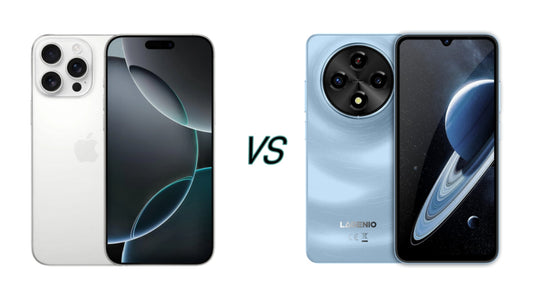Android 16 Is Here — When Can I Update to Android 16?

Welcome to the LAGENIO Smartphone Blog — where your mobile questions get clear answers.
Android 16 has officially launched, but not everyone can get their hands on it right away. Wondering when your phone will receive the update, what's new, and whether it's worth upgrading? Here's everything you need to know in a concise format.
1. When Can You Get Android 16?
Android is developed by Google, so whenever a new version like Android 16 is released, it is first made available to Google’s own devices — the Google Pixel series, which includes models such as Pixel 6, Pixel 7, Pixel 8, and newer.
Other major smartphone brands like Samsung, Xiaomi, OPPO, and vivo use customized versions of Android tailored to their own hardware and features. After Google releases the official Android 16, these manufacturers need additional time to adapt the system, optimize performance, integrate their own apps and UI, and perform extensive testing before pushing the update to their users.
Expected Android 16 Rollout Timeline:
| Brand | Estimated Timeline | Notes |
|---|---|---|
| Google Pixel | Available now (Pixel 6 and newer) | Some features exclusive to latest models |
| Samsung | Beta in Q3 2025, stable rollout in Q4 2025 | Galaxy S24 series first |
| Xiaomi | Late 2025 for flagship models | Gradual release by region |
| OPPO/vivo | Late 2025 to early 2026 | Step-by-step deployment |
| Other Brands | Likely late 2025 to 2026 | Follow official announcements |
If you're using a Pixel phone, you can upgrade right now. For others, patience is required.
2. What's New in Android 16?
Android 16 focuses on usability, privacy, and better large-screen support. The key highlights include:
- Live Updates Notifications — Real-time info like delivery or ride status on lock screen.
- Material You 3.0 Refresh — More dynamic themes, animations, and visuals.
- Advanced Security Features — Stronger protection against malware and scams.
- Multi-Window Support — True desktop-style multitasking for foldables and tablets.
- LE Audio & Auracast — Improved Bluetooth audio and shared listening.
- Photo Enhancements — Ultra HDR, better night shots, and HEIC format support.
It's a polished update enhancing everyday tasks and device performance.
3. Should You Upgrade to Android 16?
When it comes to upgrading, many iPhone users often hesitate after iOS updates — citing issues like drastic UI changes they dislike, unexpected bugs, or occasional performance slowdowns. This has led to a cautious approach where some users delay upgrading to avoid potential headaches.
Do Android users face similar concerns with Android 16?
- User Interface and Design: Unlike iOS, where major UI redesigns can be controversial, Android updates tend to be more incremental and customizable. Android 16 refines the Material You design introduced in previous versions, but you won’t see radical visual shocks that disrupt your user experience. Plus, Android’s flexibility lets you tailor launchers, widgets, and themes to your preference.
- Performance and Stability: Android 16 has been optimized to improve overall system speed and battery life, especially on newer devices like Pixel 6 and beyond. While no software update is perfect, Google typically rolls out bug fixes quickly via monthly patches. Android’s diverse ecosystem means some devices may experience issues temporarily, but major bugs are generally addressed swiftly.
- App Compatibility: As with any major update, certain apps may initially have compatibility glitches. However, Android’s open platform allows developers to adapt faster, and Google provides developers with early access to beta versions to minimize disruptions at launch.
Summary:
If you are on a compatible Pixel device, upgrading to Android 16 is generally safe and beneficial, offering improved security, features, and user experience without the drastic upheavals sometimes seen in iOS updates. For users on other brands, waiting until your manufacturer confirms stable support is wise.






















